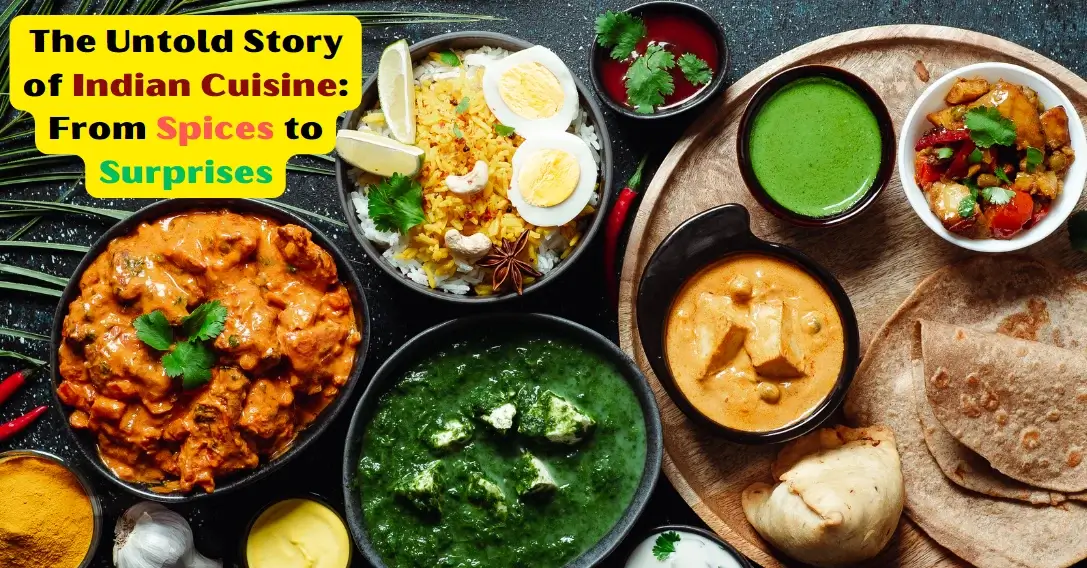
Exploring Non-Traditional Indian Dishes
Indian cuisine is renowned worldwide for its rich and diverse flavors, stemming from a wide array of spices and ingredients. As you embark on a gastronomic adventure through the menus of Indian restaurants, you may be surprised to discover that not all dishes are as “Indian” as they seem. In this article, we delve into some of the most beloved non-traditional Indian dishes that have found their way into the hearts and palates of people across the globe.
The British Influence: Mulligatawny Soup
Mulligatawny soup, a flavorful and creamy delight, may seem quintessentially Indian, but its origins are intertwined with British colonial history. During the British Raj in the 19th century, Indian cooks adapted a traditional Madrassi broth into a heartier dish to satisfy the colonialists’ taste. The result was a concoction of meat, vegetables, and spices that bears little resemblance to the traditional Indian fare. Mulligatawny soup, a testament to the fusion of Indian and British culinary traditions, continues to be a beloved dish in the U.K. and the U.S.
Madras Curry: A Misnomer
Madras curry, often a favorite in Indian restaurants, is named after the city of Madras, now known as Chennai. However, for Indians, it’s not recognized as a distinct type of curry. This flavorful dish is primarily a British creation, as it incorporates spices that the British sourced from the Madras region. The vivid red hue and fiery flavor of Madras curry set it apart, but in Chennai, it’s not a familiar dish. This illustrates how colonial influence can lead to the creation of “Indian” dishes that are foreign to the Indian palate.
Chicken Tikka Masala: A Scottish Invention
Chicken tikka masala is a globally acclaimed dish known for its creamy tomato-based sauce and tender chicken chunks. Its inception can be traced back to Glasgow in the 1970s when a Pakistani immigrant crafted a sauce to moisten dry chicken tikka. This mild and creamy creation swiftly became one of the U.K.’s most popular dishes, although it bears little resemblance to traditional Indian cuisine. Its origin story is a testament to how culinary creativity transcends borders.
The Tale of Balti
Balti dishes are commonly found in Indian restaurants, often resembling traditional curries. The term “balti” is derived from the pan used to prepare and serve the dish, although its origins remain disputed. It gained popularity in Birmingham, U.K., where the Pakistani community introduced this flavorful cuisine. While its roots may be debated, the U.K. version of balti has developed its own identity distinct from Northern Indian or Pakistani styles. It showcases how diverse culinary traditions can merge and flourish.
The Myth of Korma
Korma, a mild, creamy, and slightly sweet dish, is a common feature on Indian restaurant menus worldwide. However, this dish, known as “korma,” has little resemblance to the method of slow-cooking meat in oil or yogurt with spices from which the term originates. In India, “korma” refers to a cooking method, not a specific dish. The U.S. and U.K. versions, typically made with coconut milk and almonds, offer a mild alternative for those averse to heat. This dish exemplifies the evolution of Indian cuisine to cater to a global audience.
The Mystery of Curry Powder
Curry, a staple on Indian restaurant menus globally, is often associated with a specific spice blend known as “curry powder.” However, in India, “curry” does not refer to a particular blend of spices. The term “curry” likely originated from British colonialists who used it to categorize various sauce-based Indian dishes. In India, these dishes are known by their specific names and encompass a vast range of flavors, each requiring distinct spice blends. The term “curry” serves as a reminder of how global interpretations can simplify the complexity of Indian cuisine.
Kedgeree: An Anglo-Indian Breakfast
Kedgeree, a breakfast staple in Indian restaurants, is a fusion of British and Indian culinary traditions. This dish combines rice, smoked haddock, and hard-boiled eggs, deviating significantly from its Indian origins. Kedgeree’s journey from a lentil-based health food to a fish and egg breakfast stir fry in the U.K. highlights the adaptability of Indian cuisine to suit different tastes and preferences.
Westernized Vindaloo: A Spicy Transformation
Vindaloo, a renowned Indian dish, has evolved into a global favorite, known for its intense spiciness. However, the original Goan vindaloo was a milder creation, stemming from Portuguese influence. The traditional Goan vindaloo incorporates vinegar and aromatic spices, with no heat comparable to its Westernized counterparts. The addition of potatoes, absent in the original dish, has contributed to its distinctive flavor profile. This transformation showcases how a dish can be reimagined to suit various tastes and preferences.
Jaipur Vegetables: A Culinary Curiosity
“Jaipur vegetables,” a dish found in some U.S. retailers, raises questions about its origin and nomenclature. While Jaipur is renowned for its culinary diversity, there is no specific dish known as “Jaipur vegetables.” The inclusion of this name for a product featuring potatoes, peas, carrots, and other ingredients is a mystery. This example underscores the creative liberties taken with Indian cuisine outside its borders.
Chocolate Samosas: A Sweet Twist
Samosas are iconic Indian snacks, typically savory, but outside India, they have taken on sweet variations, such as chocolate samosas. While not authentic to traditional Indian cuisine, these delectable treats have gained popularity in global culinary scenes. Chocolate samosas, with their buttery pastry and sweet fillings, offer a delightful fusion of Indian and Western flavors.
Biryani Burrito: Fusion on a Plate
Biryani, a beloved Indian rice dish, has found a surprising fusion partner in the form of the burrito. Biryani burritos, essentially giant tortillas stuffed with biryani, lettuce, cheese, and other ingredients, represent a harmonious blend of Indian and Mexican cuisines. This fusion dish highlights the adaptability of Indian cuisine to meet the preferences of global food enthusiasts.
Conclusion
In the world of Indian cuisine, authenticity is not always the defining factor of a dish’s popularity. The dishes discussed in this article showcase how culinary traditions evolve, adapt, and fuse with other cultures, creating a diverse and exciting culinary landscape. Whether you’re savoring a Mulligatawny soup in the U.K. or indulging in a chocolate samosa in London, these non-traditional Indian dishes offer a delightful journey beyond borders, proving that good food knows no boundaries.





